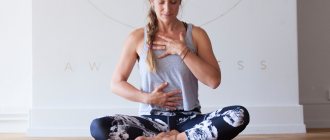Since ancient times, the greatest philosophers have tried to answer the questions: how can one objectively evaluate a person? What are the criteria for assessing personality? Which qualities are more important and which can be classified as secondary? Of course, we will never get an exact answer, because it is subjective and depends on goal setting. For some, a developed personality is one who strives for spirituality; for another, it is a creative person who creates something new every day; for a third, it is one who has unshakable principles and beliefs.
Subjectivity when assessing personality development criteria is obvious. One person can be said to be “the wild and reckless type” and at the same time “the funniest guy at the party.” Thousands of psychological tests, even when compiled according to all canons, can contradict each other.
So how do you assess personality? Testing and diagnostics must meet the following criteria: standardization, norms, reliability and validity. However, due to the incredible complexity in measurements, all this remains a theory, because a shade of subjectivity is still mixed into the assessment.
Personality assessment criteria
If you are doing business or want to find worthy friends who you can rely on in difficult times, then you periodically ask yourself the following questions:
- What is most important when assessing a person?
- What are the most fundamental qualities in him?
Much depends on your goal setting, that is, what you consider important and valuable for yourself. For example, you may decide that the following criteria are important to you:
Temperament
This is a stable set of individual psychophysiological characteristics of a person associated with dynamic rather than meaningful aspects of activity. Temperament is closely related to character and has a strong influence on it.
Character
This is the structure of persistent, relatively permanent mental properties that determine the characteristics of relationships and behavior of an individual.
Socialization
Socialization means the ability to quickly and easily establish constructive relationships with others. A socialized person is more natural and open, but at the same time flexible, realistic and capable of resolving interpersonal conflicts.
Understanding others
A mature, formed personality is free from stereotypes and prejudices, capable of adequately assessing the surrounding reality and other people.
Such a person accepts people as they are, respects their originality and the right to be themselves.
Creative thinking
A very important quality of a developed personality is that she is able to face life's problems openly and flexibly, finding creative solutions to complex problems.
Mindfulness
This is a continuous monitoring of current experiences, that is, a state in which a person focuses on experiencing the present moment, without becoming involved in thoughts about past events or about the future.
A conscious person understands the consequences of his actions; he first thinks, then acts. She chooses her own reactions, what to feel, how to behave and how to think. Such freedom is achieved through prolonged mental exercise and reflection.
Integrity
This is internal harmony, when the physical, mental and spiritual-moral parts of life are inextricably linked. Integrity occurs when what you say, think and how you behave do not contradict each other. This is how a mentally healthy person should be.
Personal integrity is not given at birth, but is formed primarily under the influence of the external environment or in interaction with the external environment. It is achieved through enormous work on oneself, analysis of one’s psyche and self-reflection.
This does not mean that such a person is self-confident. He is aware of his shortcomings, but does not engage in flagellation, but methodically eradicates them. He develops his strengths and gets rid of his weaknesses.
How does Platonov's method work in psychology?
In fact, the described method is successfully used in the field of psychiatry and psychology. After all, before helping a person solve his problem, a specialist characterizes his personal qualities.
So, how to write a psychological portrait of a personality? Examples of this are quite varied. One of them implies, in addition to describing the type of temperament, also defining the emotional side of human character. For example, experts consider 4 types of emotions: demonstrative, pedantic, stuck, excitable.
The demonstrative type is distinguished by its emotionality. Such people vigorously express their emotions and often “play to the public.” But thanks to their artistry, they are able to understand their interlocutor well. Therefore, if a representative of the demonstrative type turned to a specialist for help with a request to help him decide on his choice of profession, then the most successful recommendation for him is to choose public activity. Or you can master the specialty of a social worker.
The pedantic personality type is prone to indecisiveness and a constant feeling of fear. He is characterized by hesitation and doubt. However, positive qualities - punctuality, prudence and accuracy - are taken by the specialist as a basis and help to offer this type a certain method of resolving the situation.
Criteria for a mature personality
Various concepts are also put forward on this score, the focus of which is on a variety of elements of the personality structure.
Carl Jung said that a mature personality readily accepts responsibility for its actions. For Carl Rogers, it means the freedom to be yourself, to make your own choices, to manage your life. Next we will get acquainted with the concepts of four psychologists: Kazimierz Obuchowski, Arthur Rean, Gordon Allport and Lidia Bozovic.
Obukhovsky's concept
Polish psychologist Kazimierz Obuchowski's concept is of particular interest because it is the least similar to the others on the list. He proposes to consider four parameters and not single out the main thing among them - all of them must be developed equally in order for the personality to be considered mature.
- Feeling of life satisfaction : this is the overall positive background against which a person views his existence. However, this does not mean that such a person cannot experience negative emotions, which are an inevitable reaction to the difficulties of life. At the same time, if the influence of destructive emotions continues long enough, a person loses his ability to develop.
- The emergence of new features : a different understanding of the world, new views. And most importantly, the transition to an abstract concept of the world.
- Development of skills : a person needs to strive to acquire new skills, abilities and knowledge, despite the fact that this leads to an increase in the complexity of the tasks facing him. It must constantly improve to keep up with demands.
- Self-control : A person is controlled by his emotions, so he must learn to distance himself from them so that it does not affect his intellectual capabilities.
Rean concept
Russian psychologist Arthur Rean considers four basic criteria for a developed personality:
- positive thinking and perception;
- self-development;
- tolerance;
- responsibility.
Rean argued that personality is never fully formed, it is constantly evolving. But he sees this not as a tragedy, but as the opening of limitless opportunities for personal improvement.
A person must learn to successfully implement the resources, strengths and abilities at his disposal to achieve his goals, as well as actively master more global and significant values.
Allport concept
American psychologist Gordon Allport offers six main criteria for a developed personality:
- Self-acceptance and tolerance towards others . A developed personality has its own strong beliefs and at the same time allows for the existence of a different point of view.
- Strong social connections . A developed personality knows how to maintain close relationships and at the same time not interfere with others with his existence.
- Expanding the self-concept . This is the activity of the individual, the purposefulness of his activities.
- Unity of ideological views . A mature person has an idea of his life purpose.
- Self-objectification . A person is able to be himself, be in harmony with his inner world and not play other people's roles.
- Realistic perception, assessment of skills and task . A person should not be subject to momentary fads, but instead set a goal and achieve it.
Bozovic concept
Soviet psychologist Lidiya Bozhovich, a student of Lev Vygotsky, identifies two key criteria for a formed personality.
First criterion : the motives of such a person are inherently hierarchical. She is strong-willed and capable of indirect behavior (she is not controlled by impulses, but by rules, requirements and norms).
Second criterion : a person’s ability to consciously control and manage his behavior. This is only possible if he relies on his own motives, goals, aspirations and beliefs.
We wish you good luck!
Did you like the article? Join our communities on social networks or our Telegram channel and don’t miss the release of new useful materials: TelegramVKontakteFacebook
We also recommend reading:
- Storytelling
- Character
- Mature personality
- How to Achieve Emotional Maturity
- The influence of social roles on personality development
- “What is in your character?”
- Personal identity
- Conditions for character formation
- Spheres of personality
- Socialization of personality: briefly about the main thing
- How to create your own personality chart
Key words:_D1002, _D1003, _D1027, 1Self-knowledge, 4Self-knowledge
Psychological portrait of a person
A psychological portrait is a detailed and objective definition and description of a personality. It often has to be compiled by those who work a lot with people:
- Psychologists;
- Psychiatrists;
- Teachers;
- Social workers and social educators.
Compiling a description consists of several stages; none of them should be skipped, otherwise you will not be able to write the document correctly.
What is it needed for
A psychological portrait is so called because it reveals a person’s soul in as much detail as a painting describes his appearance. It is necessary for the specialist to understand exactly how to work with a specific person, based on his individual characteristics.
Is it possible to make up by appearance?
Appearances can often be deceiving. When drawing up a description, you cannot rely only on appearance, because:
- People often want to appear different;
- A person's appearance is constantly changing;
- Many character traits have nothing to do with a person’s appearance.
Thus, it is not possible to draw up a portrait in absentia, from a photograph of a person.
Appearances can sometimes be deceiving
Attention! In the 19th century in Western Europe, the pseudoscience of “phrenology” was very popular: psychologists and doctors tried to create a psychological portrait based on the shape of the client’s skull, the bulges and depressions on the head. For example, it was believed that a certain skull shape was characteristic of all criminals
Drawing tests
Man - determination of individual personality characteristics
The psychological present (central part) is ambiversion (balance in the characteristics of extra- and introversion).
The size of the figure is egocentrism, the desire to attract attention to one’s own person. Parts of the figure:. Head - the value of the intellectual principle, rational approach, spirituality
The priority of these values in the individual. Feeling smart or wanting to be smart
Head - the value of the intellectual principle, rational approach, spirituality. The priority of these values in the individual. The feeling of being smart, or the desire to be so.
Body - large body - tendency to exhibit an emotional and bodily type of reaction, insufficient awareness of one's behavior, desire for sensual pleasures. The priority of these values in the individual
Attention is also paid to emphasizing individual details
Legs, feet - the figure is stable - the person feels stable, resistant to stress, positive self-esteem.
Arms, hands - arms and hands are clearly drawn - the personality is active in establishing contacts, social confidence, success.
The face is drawn - acceptance of the image of the Self, awareness of one’s own individuality.
Gender is a normative situation—the gender of the person drawn corresponds to the gender of the author.
Age is an approximate age match.
A person of a different gender - reflects the characteristics of the author’s perception of people of a different gender.
The figure of a person in Figure No. 1 occupies more space and is felt as more significant in society than the figure of a person of the opposite sex. The person in Fig. No. 1 is perceived as more stable and self-confident.
The Man in the Rain is a projection of the author’s behavior during stressful situations.
The amount of rain is moderate, which means there are problems. A man shields himself from the rain with an umbrella, while dissatisfaction is reflected on his face - this means that he is not used to coping with stressful situations and is trying in every possible way to avoid them. However, support is present, but the legs are immersed in the water. The eyes are not hidden by glasses, which indicates the frankness of this person.
Family - diagnostics of intra-family relationships
The number of connections in the family corresponds to the number of characters. There are four of them. There are no people as such, but the presence of a father and mother, as well as two brothers, is clearly visible. The gender of the figures is easily distinguishable. The father has the greatest support in the family - he occupies the extreme left position and occupies the largest area of support. The mother in the family is “under control”
the male half of the family - father and son. There are no visible family connections between generations. However, the bond between parents is quite strong.
Conclusion.
Currently, psychology is becoming increasingly popular and relevant. Psychology is necessary for every person, because it helps you understand your problems, your character, and helps you make the right decision in a given situation.
Thus, in this work I tried to consider approaches to such a multifaceted concept as the concept of “personality”, and made an attempt to describe and analyze my psychological portrait of the individual.
Studying your own psychological portrait, in my opinion, is very useful. The tests I took helped me get to know myself better and identify my dominant abilities and character traits. I believe this will help me later in life. Now I know which aspects of my personality need to be developed, realized, improved, and which are better to get rid of. This will undoubtedly help me in communicating with different people (especially since my future profession involves working with people), in finding approaches to different people.
List of used literature:
- Karelin A. Great encyclopedia of psychological tests. -M.: Eksmo, 2007.
- practical psychology. Methodology and tests / Ed. D.Ya. Raigorodsky.
- Laongard K. Accented personalities. — Rostov-on-Don, 1997.
- https://www.psyline.ru/leongard.htm
- https://www.bitnet.ru/psycho/kettel-test.html
15
If you are the author of this text and believe that your copyright is being violated or do not want the text to be published on the ForPsy.ru website, send a link to the article and a removal request:
Expressing emotions
Charles Darwin hypothesized that all homosapiens (Homo sapiens) have the same facial expressions, showing all six emotions.
Researcher Paul Ekman confirmed Darwin's hypothesis after conducting an experiment with Americans and Japanese. He observed people's emotions when watching a horror film. The Japanese behaved more restrained, due to cultural traditions of restraining their emotions. But in general, the pattern of fear on all faces was expressed the same way.
The experience of communicating with people allows us to create a psychological portrait of the personality of each interlocutor. But it is not easy to recognize, for example, the dissatisfaction that is hidden behind a person’s smile. Each emotion has manifestations that can be used to determine the true attitude of the interlocutor. Looking carefully at a face, we understand on an unconscious level what kind of person our interlocutor is and what can be expected from him. The face signals character, human basic emotions.
Components of a psychological portrait
A psychological profile can be drawn up for yourself or to describe another person. But in any case, it includes the required components:
- Temperament. Traditionally, temperament types are divided into sanguine, choleric, phlegmatic, melancholic and determine a person’s behavior style.
- Intelligence. Determines the ability to learn, adapt, and rationally think.
- Character. These are stable behavioral characteristics that determine the attitude towards work, towards other people, towards oneself, towards things.
- Ability to communicate. Includes verbal, non-verbal, semantic (meaningful) manner of communication.
- Capabilities. General abilities include readiness to work, mental flexibility, adaptability, and productivity.
- Emotionality. Or rather, the ability to manage and control your emotionality.
- Self-esteem. This is an emotional and value-based attitude towards oneself, which is expressed in underestimated, overestimated, adequate self-esteem.
- Directionality. It is based on the motivational-need sphere, which can be aimed at a task, at communication, at oneself.
- Level of self-control. This is control of one’s own actions and influences, which includes emotional control and self-control of behavior.
- Ability for group interaction. This is the ability to communicate, the ability to maintain a conversation, to find common topics or interests.
There are many methods for drawing up a psychological portrait, and it makes no sense to use them all at the same time. An HR manager can combine several techniques depending on the applicant’s future position. For example, for some specialties the priority is responsibility and stress resistance, while for others it is communication skills and the ability to persuade.
There are standard personal and professional questionnaires with which you can create a psychological portrait - an example of the questionnaire along with its transcript can be found in the public domain on the Internet and on our website. The most popular are:
- Temperament type test
- Perception type test
- Test: Beck Depression Scale
- Loneliness test
- Test: child, adult, parent
- Test: Self-Esteem Scale
- Self-esteem test
- Self Confidence Test
- Self-doubt test
- Freud's test
But the highest aerobatics is the psychological profile of the criminal, which is compiled by investigative profilers. After all, they do not receive information from tests, and often do not even go to the crime scene. Based on photographs, protocols, and expert reports, profilers make assumptions about the possible age, marital status, upbringing, and sexual maturity of the criminal, in order to then use these data to draw up a future algorithm of behavior.
Nature
In the same situation, people behave differently. The difference in behavior is determined by temperament. It is the most important factor in constructing a portrait in psychology.
Psychology explains this term as the psyche of the individual, with the characteristics of the nervous system. This is the content, the intensity of psychological processes.
There are 4 types of temperament:
- Melancholic people are soft personalities capable of empathy. Dreamy, withdrawn, vulnerable.
- Phlegmatic people are patient, reliable, constant people who have good control over their behavior and desires. They cannot work in an energetic team; they need to find their own pace.
- Cholerics are energetic, active individuals who have increased determination. The disadvantages include increased aggressiveness, conflict, and lack of patience.
- Sanguine people are enthusiastic, cheerful people who love to make new acquaintances. The disadvantages include unreliability, frivolity, scatteredness.











